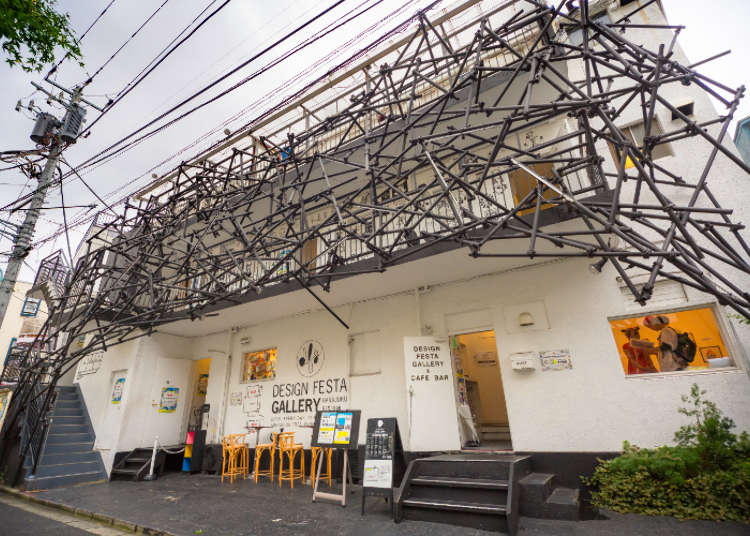
Design Festa Gallery: Harajuku's Quintessential Art Space (Video)
- Written by: Holly Neslusan
A haven for artists located in Tokyo's Harajuku district. This two-building art village consisting of 75 different exhibition spaces, allows artists to freely exhibit their work, whether it be photography, illustration, fashion, craft, or performance art. Art lovers can also experience independent films, collaborative projects, and more. In keeping with the multicultural vibe, the gallery has many English-speaking staff, making it easily accessible to the international crowd. I took a visit to Harajuku to see what Design Festa Gallery had to offer, and even had the chance to chat with a few of the featured artists!
Over 20 years of Artistic Expression
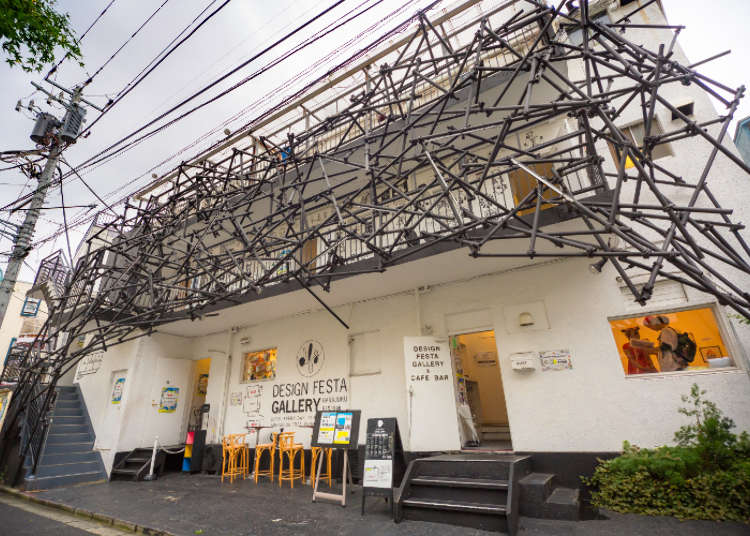
The International Art Event Design Festa was launched in 1994 as a way to provide people an opportunity for creative expression. Twice a year the festival features over 12,000 artists, designers, and performers as the single largest art festival in Asia. In 1998, the Design Festa Gallery officially opened its doors. Throughout its history, the gallery has maintained a policy of allowing artists to exhibit and sell their work, free of commission fees. Both the Design Festa event and gallery welcome exhibits regardless of age, nationality, language, or medium. Creations by amateurs as well as professional artists can be seen on display. Exhibited works can be changed as often as every day, providing visitors a fresh experience even after multiple visits.
Buildings Overflowing with Art, From the Inside Out

The Design Festa Gallery consists of two buildings, East and West. The beauty of Design Festa Gallery is that art is not just contained within its walls; instead, art appears to be overflowing from the buildings. The exterior of the West building is covered in a web of black steel pipes. On the outer walls of second floor, an ongoing stencil art project can be seen. Connecting the two buildings is a mural created by an artist from Thailand, and you can see more paintings on the outside of the gallery. The jumble of art styles somehow perfectly meshes together, befitting its location in fashionable, offbeat Harajuku.
A Cozy, Relaxed Vibe
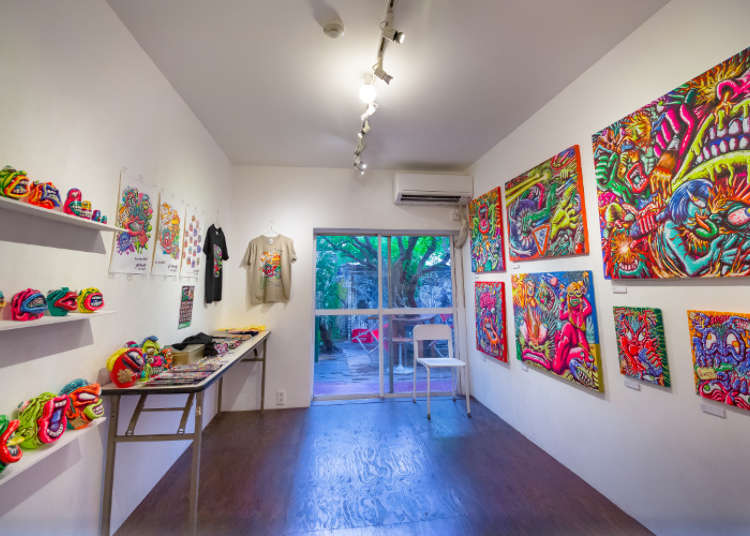
A large part of the charm of Design Festa Gallery is the relaxed vibe throughout the premises. Most of the rooms are quite small, featuring the works of just one or two artists, making for an intimate and concentrated viewing experience. An exhibit by Shinya Nishikata featured neon colored paintings and sculptures with designs that would be equally at home in a skate park as they are in a museum.
Happy Colors
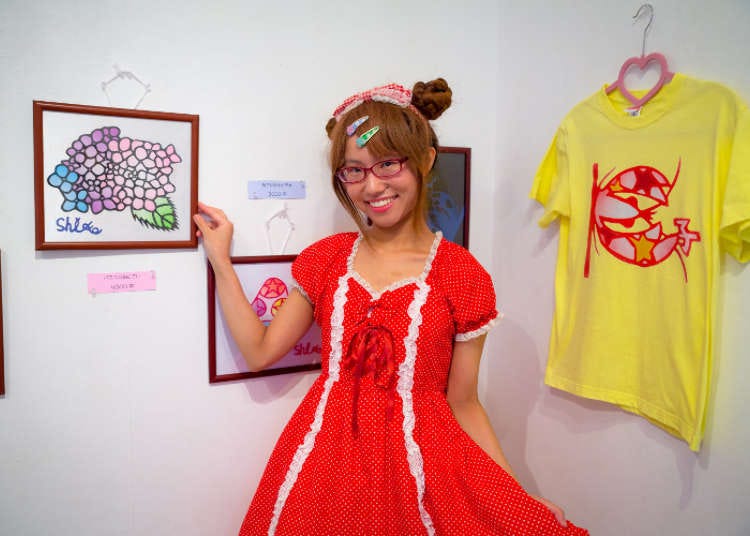
You’re likely to find many of the artists themselves in the gallery, just as I did on the day of my visit. One of the artists we met was named Shi-ko, a multi-talented artist, who also spends time as a lolita/gothic lolita model. As part of her “Happy Colors Market,” Shi-ko offered a colorful assortment of original paintings, accessories, and t-shirts. Dressed in a red polka-dot dress with hairclips she designed herself, she told me me that she really likes being able to meet both Japanese and international visitors at the gallery. Her designs live up to the name of her exhibit, with bright colors and happy imagery in every work. I was curious about one particular image that appeared frequently: a crayfish in the shape of the letter "C" followed by the character "ko" (子). It turns out that it's a quirky representation of of her name, with "C-ko" standing for "Shi-ko" (In Japan, the letter "C" is often pronounced as "shi"). It was a pleasure to have met Shi-ko, who was as cheerful as her artwork.
Nyanstagram
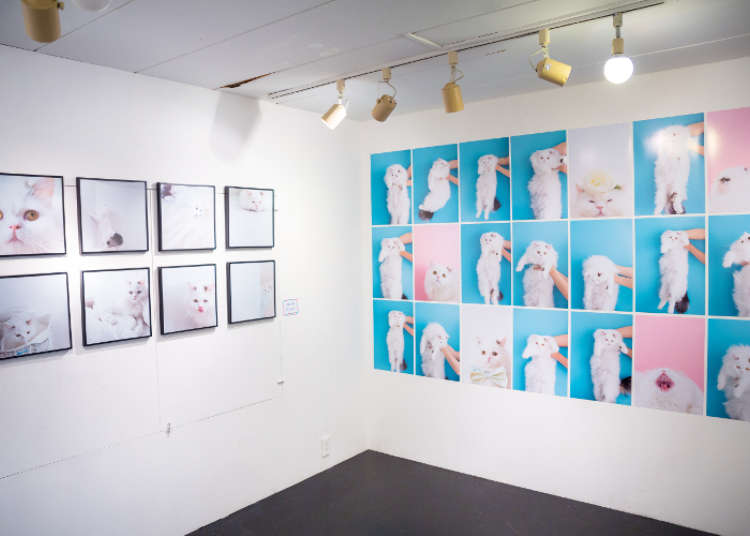
Perhaps the most whimsical exhibit was Natsuki Hamamura’s “Machiavelli Meets Nyanstagram,” featuring photos of the artist’s diabolically-named pet. In addition to meeting the exhibition's creators, fans could buy stickers, cat toys, and even a Nyanstagram book. The book features color photos of Machiavelli, as long with practical tips and tricks for cat owners seeking to take the perfect pictures of their own beloved felines. Personally, I liked the Machiavelli parody movie posters, but I’m pretty sure my cat would most appreciate the kitty teepee on display in the corner.
Immerse Yourself in Creativity

As mentioned earlier, the art you can find is not limited to a small, designated space. Just about every space is covered in some form of art. I wasn’t just viewing art – I was walking in the midst of it! Visitors are surrounded by creations, some of which can be cute, surreal, beautiful, or grotesque. Even the toilet room is used as an art rental space! While everyone will have their own opinion, one of the works that most captured my attention was an intricate black and white design on the walls adjacent to one of the indoor staircases.
Videos, Events, Souvenirs
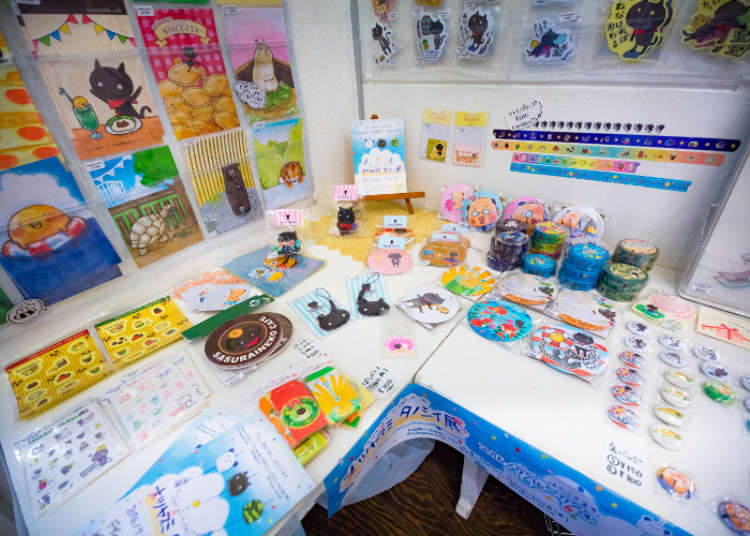
I was also able to take a peek at a mural-covered area on the third floor that is used for various purposes, such as a reception room, discussion area, and sometimes as a spot for events. It has even been the place of live broadcasts from Japan's leading video website, Nico Nico Douga. If you're lucky on your visit, you might be able to catch a fashion show or other performance either on the third floor or another area in the gallery.
In addition to the exhibited artworks available for purchase, the gallery has an “Art Piece Space” with a number of postcards, jewelry, and other trinkets that you might want to take home as a souvenir. I was surprised to learn that artists can rent their own part of the space for just 540 yen per day, without having to give up any of their profit.
Design Festa Food

After enjoying the gallery, visitors can choose to catch a bite at either of the two eateries on site: Design Festa Cafe & Bar (try one of their vanilla avocado shakes!), or Sakura Tei, a restaurant specializing in okonomiyaki, a Japanese food which is something like a cross between an omelette and a pizza that you prepare yourself.
Visiting Design Festa Gallery
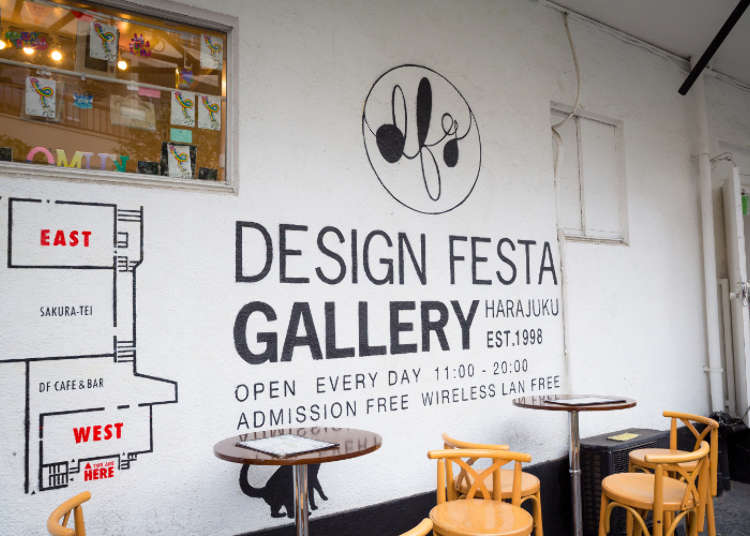
Over 100 people (roughly 30% of whom are foreigners) visit Design Festa Gallery each day to experience some of Tokyo’s most original artwork. While I have visited more than a few museums around Japan, this was one of the most unique I have seen, both in terms of the variety of artwork showcased, and the space itself. As mentioned before, the exhibits are constantly changing, so I'm already looking forward to my next visit to see what else is in store. Whether you’re artistically-inclined or you just want to get a taste of authentic Harajuku culture, I highly recommend paying a visit!
-
Design Festa Galleryデザインフェスタギャラリー
- Address East Building:3-20-2 Jingu-Mae, Shibuya, Tokyo 150-0001 / West Building:3-20-18 Jingu-Mae, Shibuya, Tokyo 150-0001
Open everyday, 11:00 a.m. - 8:00 p.m.
After growing up in Massachusetts, Holly headed to Japan in search of new adventures and green tea. She ultimately made her way to Tokyo, where she enjoyed exploring and writing.
- Area
- Category
*Prices and options mentioned are subject to change.
*Unless stated otherwise, all prices include tax.
Popular Tours & Activitiess
Recommended places for you
-

Simply Oishii Wagashi School Discover Japanese Culture Through Wagashi: A Hands-On Experience!
by: Guest Contributor
-

The Best Japanese Food Representing 2025! 'Dish of the Year®' Annual Award Results Announced
-

Get Ready to Catch 'Em All! First Ever Permanent Outdoor Pokémon Park Opening Near Tokyo!
-

[Extended Offer!](12% OFF KKday Coupon) Mt. Fuji Autumn Leaves, Powder Snow & More! 15 Best Tours to Experience Japan in Fall & Winter
-

Keisei × Keikyu 16-Temple Goshuin Tour: Discover Deeper Tokyo & Yokohama
by: Guest Contributor
-

Don't Miss Out! The One Thing You Must Do Before Shopping at Mitsui Shopping Park LaLaport: Get Your Max 10% OFF Coupon Book
Inspiration for Accommodations
-

Enjoy Mt. Fuji from the Comfort of Your Room! Recommended Ryokan with Mt. Fuji View
-

Stay Near the Cherry Blossoms! Hotels for Cherry Blossom Viewing in Tokyo
-

Family-Friendly Hotels with Free Shuttle to Disneyland: Convenient Access for a Magical Stay
-

Top Ranked Hakone Hotels with Mt. Fuji View: Enjoy Stunning Scenery from Your Private Space
-

Convenient Tokyo Hotels with Airport Shuttle: Ideal for Families and Heavy Luggage
-

Stunning Tokyo Tower View Hotels: Enjoy Spectacular Scenery from Your Private Space
-

Convenient Asakusa Hotels with Kitchens: Ideal for Extended Family Visits
-

Experience Luxury: Hakone's 10 Best Five-Star Accommodations
-

Enjoy Mt. Fuji Autumn Leaves! Top Hotels Near the Popular Autumn Leaves Corridor
-

Experience Hakone Fall Foliage from Your Room with Stunning Views
-

Delicious Snacks and Memorable Souvenirs at the Snoopy Museum
-

JR Edition: Visit all of Tokyo in one Day with the Tokyo Metropolitan District Pass!
-

What to Pack for Japan: 8 Essential Things for a Hassle-Free Trip
-

8 Free Museums in Tokyo for All Members of the Family
-

Discover the Many Attractions of the National Art Center, Tokyo - Art, Architecture, Gastronomy and Beyond!
-

Tokyo Roppongi|Roppongi Station Area Map & Sightseeing Information
- #best ramen tokyo
- #what to buy in ameyoko
- #what to bring to japan
- #new years in tokyo
- #best izakaya shinjuku
- #things to do tokyo
- #japanese nail trends
- #what to do in odaiba
- #onsen tattoo friendly tokyo
- #daiso
- #best sushi ginza
- #japanese convenience store snacks
- #best yakiniku shibuya
- #japanese fashion culture
- #best japanese soft drinks



















